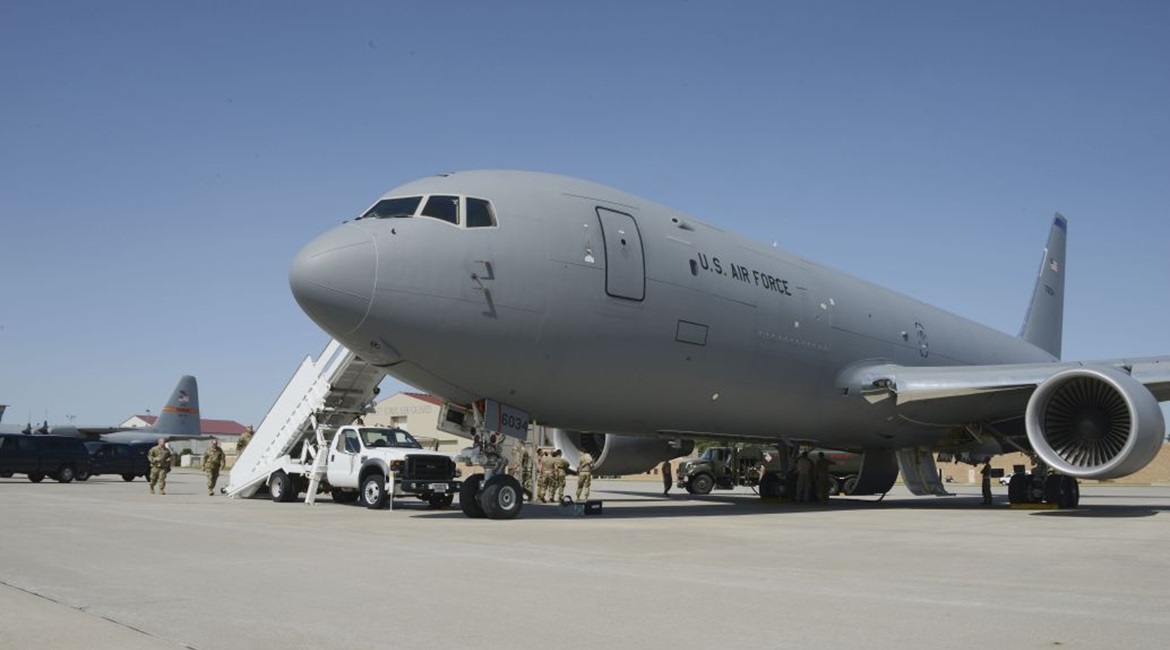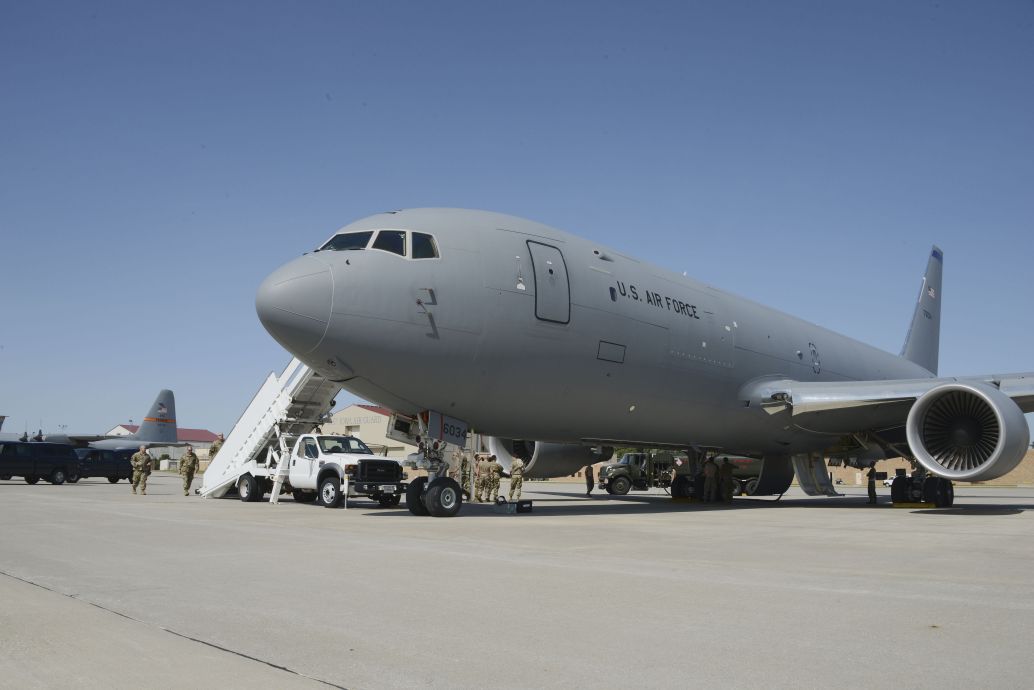
The US Air Force (USAF) reduced from six to four the number of most critical Category 1 deficiencies in the Boeing KC-46A Pegasus aerial refuelling tanker programme on 29 January 2021.
General Jacqueline Van Ovost, Air Mobility Command (AMC) chief, said at a Defense Writers Group event on 1 February that the two deficiencies removed from Category 1 were associated with the maintenance of the KC-46A’s auxiliary power unit (APU) and some of its component pieces.

A KC-46A from the New Hampshire Air National Guard’s 157th Air Refueling Wing arrives at the Sioux City, Iowa, Air National Guard on 13 September 2020. The USAF has reduced the number of KC-46A Category 1 deficiencies, the most critical ones, from six to four. (US Air National Guard)
The USAF has closed the APU bleed air duct clamp deficiency, said Boeing spokesperson Jane McCarthy on 1 February. It also downgraded the APU drain mast issue to a Category 2 deficiency, which is less critical.
Category 1 deficiencies are critical issues that would prevent the USAF from executing the aerial refuelling mission, and have no workarounds. Category 2 deficiencies have workarounds, such as procedural restrictions.
The APU is used primarily during ground operations for air conditioning and starting the aircraft’s engine. The bleed air duct is a tube that functions similar to how forced air is used in a home.
The duct transports pressurised air generated by the APU, which is used to start the main engine, as well as to cool and heat the aircraft. Gen Van Ovost said that the APU bleed air duct clamp is inside the KC-46A’s tail, which also houses the APU, and that the clamp was moving and causing problems.
Looking to read the full article?
Gain unlimited access to Janes news and more...




